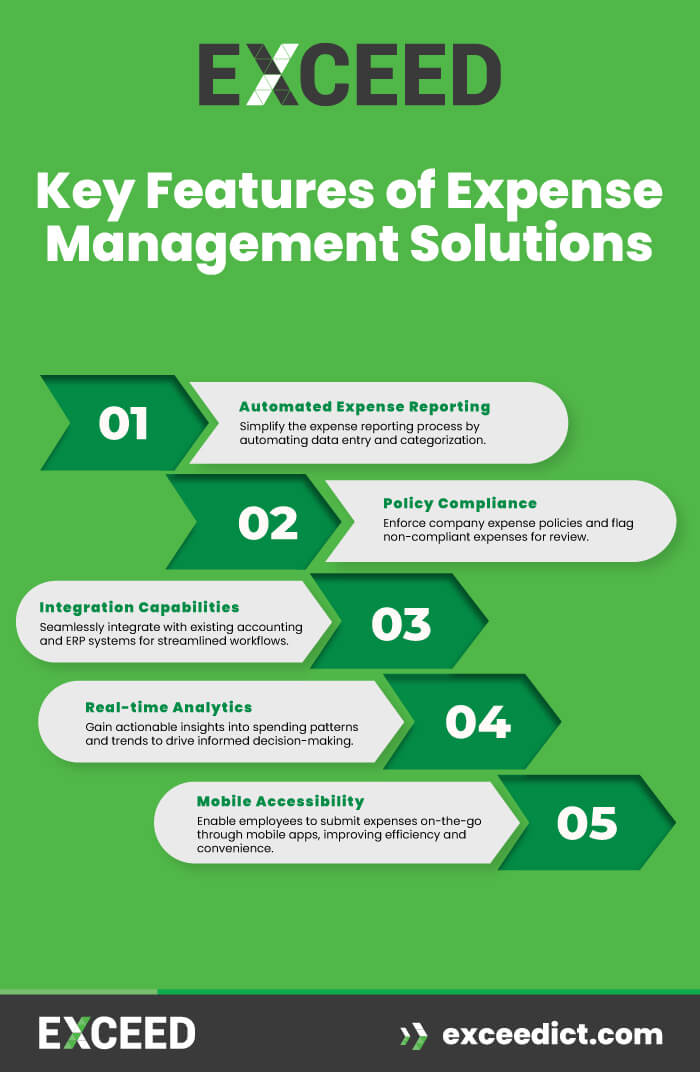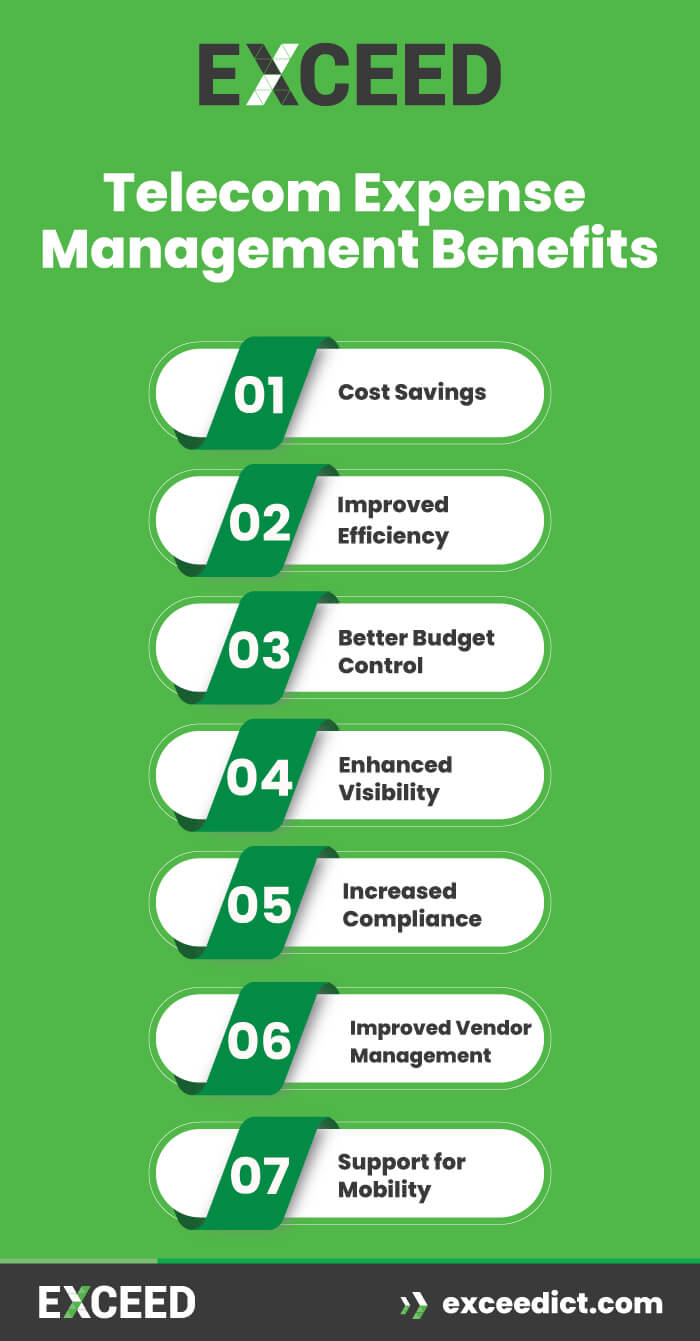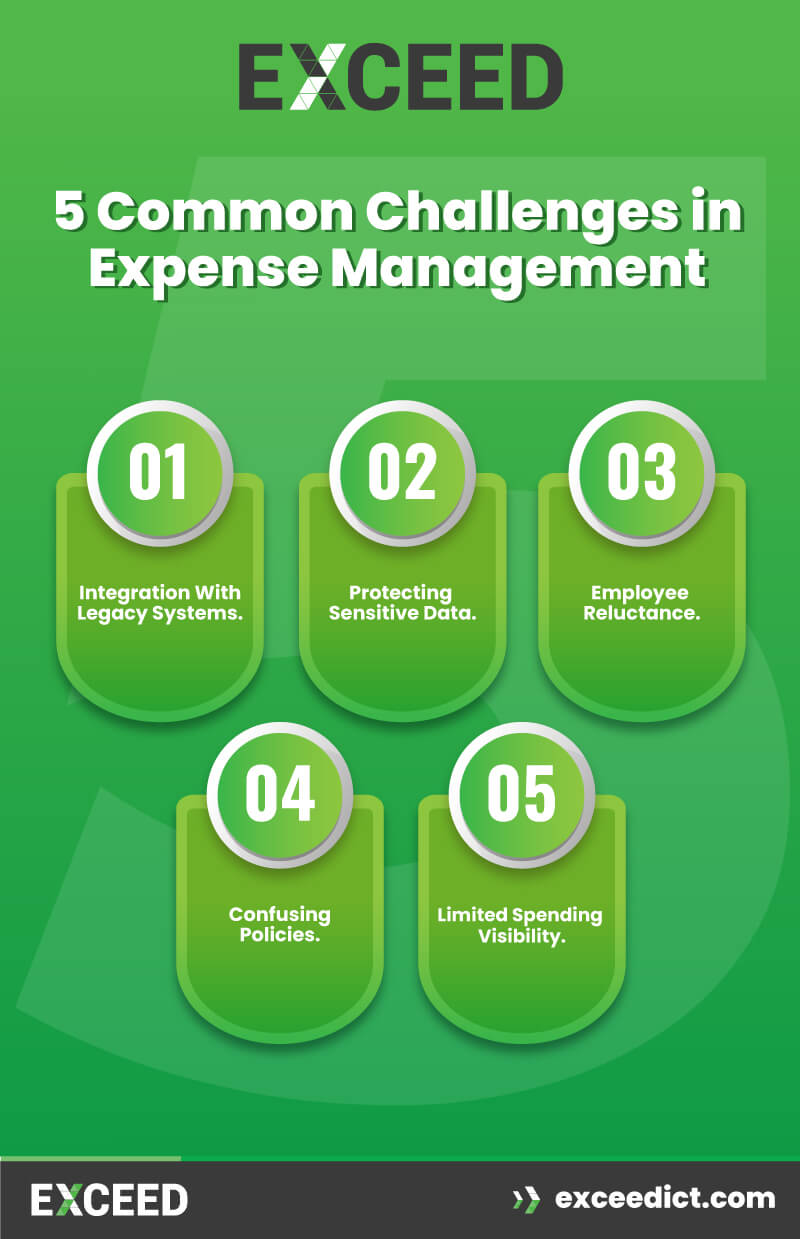
Expense management solutions offer innovative approaches to streamline processes, increase efficiency, and enhance visibility into spending. This comprehensive guide explores the intricacies of expense management solution, providing insights into best practices, tools, and strategies to optimise your business’s financial management.
That’s where Exceed ICT’s Expense Management Solution Aspect comes in. Designed to simplify financial oversight and control, Aspect combines advanced information processing with a user-friendly web-based interface. It empowers businesses to track, analyse, and report on telecommunications expenditure with unmatched accuracy and ease.
The Importance of Expense Management Solutions
Expense management solutions play a pivotal role in helping businesses maintain control over their finances. By automating tedious processes, such as expense tracking and reimbursement, these solutions free up valuable time and resources, allowing employees to focus on core tasks. Additionally, they provide real-time insights into spending patterns, enabling informed decision-making and proactive cost-saving measures.
What is telecom expense management
Telecom expense management (TEM) refers to the process of controlling and optimising expenses related to telecommunications services within an organisation. This includes managing costs associated with mobile phones, landlines, internet connectivity, and other communication services.

Key Features of Expense Management Solutions
- Automated Expense Reporting: Simplify the expense reporting process by automating data entry and categorization.
- Policy Compliance: Enforce company expense policies and flag non-compliant expenses for review.
- Integration Capabilities: Seamlessly integrate with existing accounting and ERP systems for streamlined workflows.
- Real-time Analytics: Gain actionable insights into spending patterns and trends to drive informed decision-making.
- Mobile Accessibility: Enable employees to submit expenses on-the-go through mobile apps, improving efficiency and convenience.
TEM involves various tasks such as:
- Invoice Management: Reviewing and auditing telecom bills to ensure accuracy and identifying any discrepancies or overcharges.
- Cost Allocation: Allocating telecom expenses to different departments or cost centres within the organisation.
- Optimisation: Identifying opportunities to reduce costs through renegotiating contracts with service providers, eliminating unnecessary services or devices, and implementing cost-saving measures.
- Policy Enforcement: Enforcing policies related to the usage of telecom services to prevent misuse and excessive spending.
- Inventory Management: Maintaining an inventory of all telecom assets and services to track usage and expenses effectively.
- Reporting and Analytics: Generating reports and analysing data to gain insights into telecom spending patterns and identify areas for further cost reduction.
Telecom expense management benefits

Telecom expense management (TEM) offers several benefits to organisations:
- Cost Savings: By identifying billing errors, eliminating unnecessary services, renegotiating contracts, and implementing cost-saving measures, TEM helps reduce telecom expenses, leading to significant cost savings.
- Improved Efficiency: TEM streamlines the process of managing telecom expenses, reducing administrative burden and freeing up valuable resources within the organisation. Automated invoice processing and reporting tools improve efficiency and accuracy.
- Better Budget Control: By gaining insight into telecom spending patterns and enforcing policies, organisations can exercise better control over their telecom budgets, preventing overspending and ensuring financial discipline.
- Enhanced Visibility: TEM provides comprehensive visibility into telecom expenses, usage patterns, and inventory, enabling informed decision-making and strategic planning. This visibility helps identify areas for cost optimisation and resource reallocation.
- Increased Compliance: By enforcing policies and monitoring usage, TEM helps ensure compliance with regulatory requirements and internal policies, reducing the risk of non-compliance penalties and legal issues.
- Improved Vendor Management: TEM facilitates better management of relationships with telecom service providers by enabling organisations to negotiate favourable contracts, resolve disputes, and hold vendors accountable for service delivery.
- Support for Mobility: With the increasing reliance on mobile devices and remote work, TEM helps organisations effectively manage mobile expenses, track usage, and implement policies to control costs associated with mobile services.
Choosing the Right Expense Management Solution
When selecting an expense management solution for your business, consider the following factors:
- Scalability: Ensure the solution can accommodate your business’s growth and evolving needs.
- Integration Capabilities: Choose a solution that seamlessly integrates with your existing systems to minimise disruption.
- Customization Options: Look for customizable features and workflows that align with your unique business requirements.
- Customer Support: Select a vendor that offers reliable customer support and training resources to assist with implementation and troubleshooting.
5 Common Challenges in Expense Management

Despite their numerous benefits, expense management solutions may encounter challenges such as:
- Integration Issues: Difficulty integrating with legacy systems or third-party applications can hinder implementation and adoption.
- Data Security Concerns: Safeguarding sensitive financial data from unauthorised access or cyber threats is paramount.
- Employee Resistance: Resistance to change and reluctance to adopt new technologies can impede the success of expense management initiatives.
- Complex Policies: Overly complex expense policies may confuse employees and lead to errors or non-compliance.
- Lack of Visibility: Inadequate reporting capabilities and limited visibility into spending can hamper decision-making and cost control efforts.
About Exceed ICT Expense Management (Aspect)
Aspect by Exceed ICT is a next-generation expense management platform built to help organisations take control of their ICT costs. The system delivers a complete view of your telecom and IT expenses all through an intuitive, flexible, and secure online portal.
By transforming complex data into actionable insights, Aspect enables smarter financial decision-making, allowing you to monitor actual spend versus budgeted amounts in real time.
Key Features
- Intuitive Dashboard: View and manage all telecommunications expenses through a centralised, web-based interface.
- Comprehensive Analysis: Easily track expenditure trends and cost centre performance.
- Customisable Reports: Generate detailed reports tailored to your organisation’s structure and objectives.
- Real-Time Insights: Identify overspending, inefficiencies, and cost-saving opportunities.
- Multi-Level Access: Assign different access rights for managers, finance teams, and administrators.
Security and Accessibility
At Exceed ICT, data security and privacy are top priorities.
- Hosted Securely in Australia: All data is stored and managed within Australian data centres, ensuring compliance with local data protection regulations.
- 24/7 Access: The system is available anytime, anywhere, giving managers the flexibility to review expenditure and generate reports when needed.
- Simple and User-Friendly: Aspect’s intuitive interface ensures that users can easily navigate and interpret financial data no technical expertise required.
Smarter Financial Oversight
Tracking expenses across multiple departments or cost centres can be time-consuming and prone to human error. Aspect simplifies this process by allowing you to:
- Compare Budgeted vs Actual Spend: Quickly assess how each cost centre is performing against its allocated budget.
- Identify Trends and Variances: Detect patterns in spending behaviour and address anomalies before they impact your bottom line.
- Enhance Accountability: Promote financial transparency by giving managers access to their department’s performance metrics.
This streamlined visibility not only improves accuracy but also saves valuable time and resources, allowing businesses to focus on growth rather than manual reconciliations.
Why Choose Exceed ICT’s Expense Management Solution
Built for Businesses of All Sizes
Whether you’re managing a single office or a multi-location enterprise, Aspect scales to meet your organisation’s needs.
Data-Driven Decisions
Gain actionable insights that help your team make informed financial decisions based on real-time expense data.
Australian-Hosted Security
Keep your sensitive business information safe with local hosting and enterprise-grade security measures.
Cost Efficiency
Reduce unnecessary spending, eliminate billing errors, and uncover savings across your ICT services.
Simplicity and Speed
Aspect’s intuitive design ensures that managers can access, review, and interpret data without long learning curves or manual spreadsheets.
Empowering Better Business Decisions
With Aspect by Exceed ICT, you’re not just monitoring expenses you’re managing them proactively. The platform empowers your organisation to gain complete visibility, identify opportunities for savings, and optimise resource allocation.
By providing a single, secure portal for all telecommunications and IT-related costs, Aspect transforms financial management into a strategic advantage.
Conclusion
Managing telecommunications expenses can be challenging without the right tools. Exceed ICT’s Expense Management Solution – Aspect delivers the clarity, control, and confidence businesses need to stay financially efficient in an increasingly connected world.
Whether you’re looking to track departmental spending, simplify reporting, or strengthen financial governance, Aspect ensures you have the data you need when and where you need it.
Discover how Aspect by Exceed ICT can help your business take control of its costs today.
Call us on 1300 832 639 or simply search “Exceed ICT” on Google Maps to find a location near you and connect with our team today.
We also provide
We also provide Telecoms Expense Management, Device Deployment, Mobile Fleet management, Telstra enterprise Mobility, Telstra mobility Managed Services, Improve Business Core values, Business Consulting, Network Management, Telstra Expense Management and many more Services. Check our Services And Solutions.


